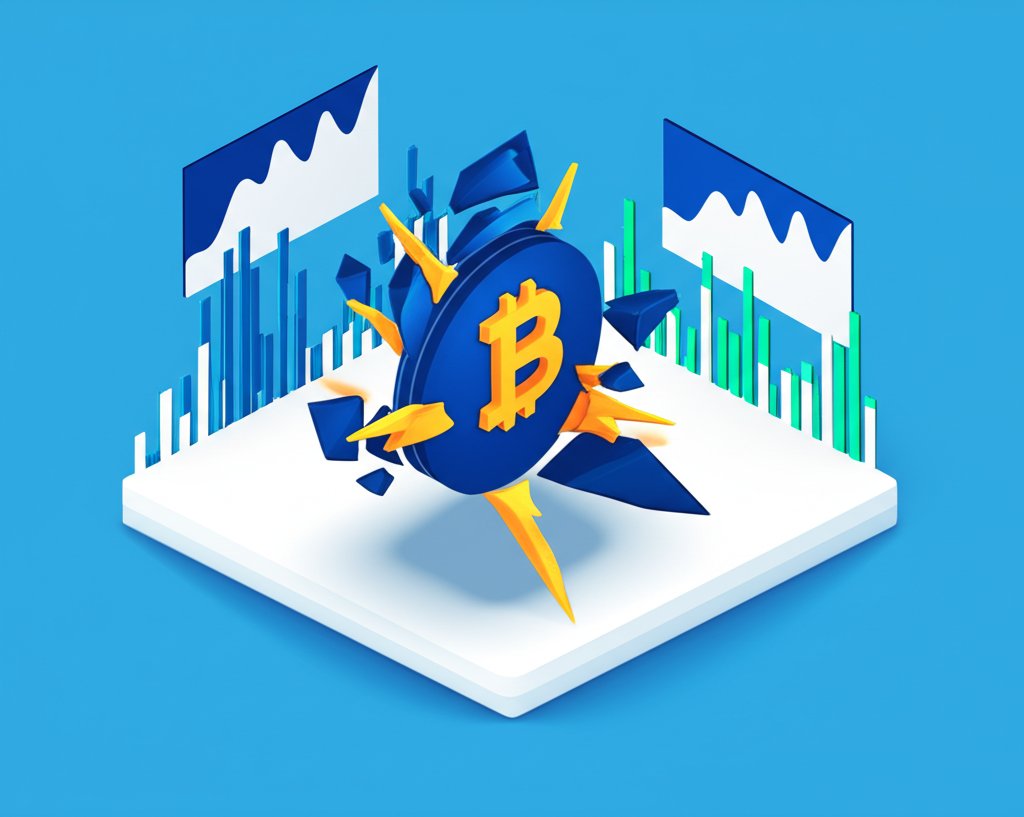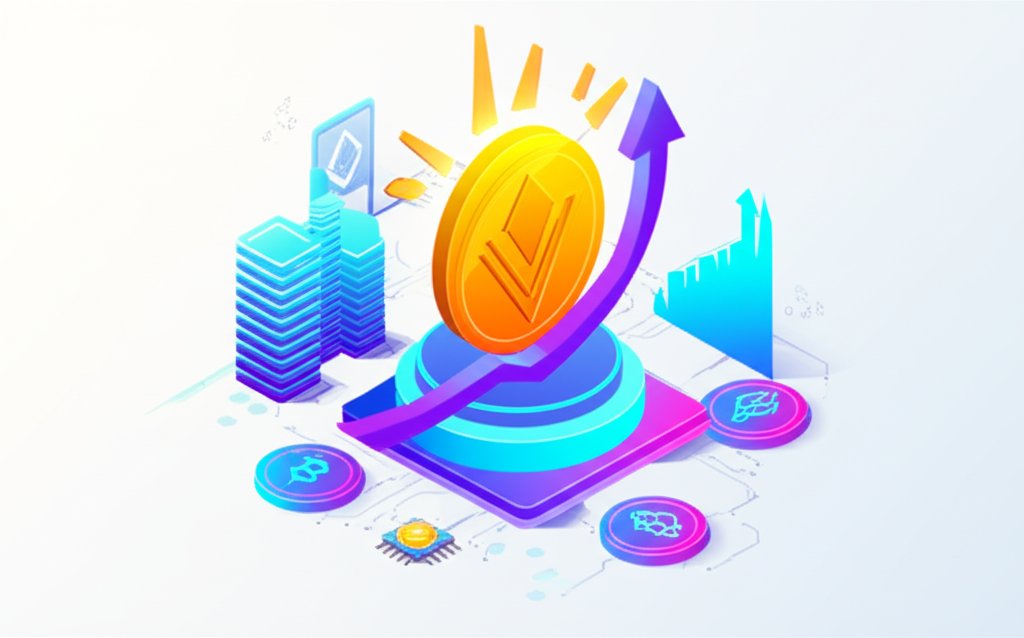
It’s the holy grail of crypto investing: finding that one project, that hidden gem, before it skyrockets. The dream of identifying the "next crypto coin to explode" is powerful, fueled by stories of early investors turning modest sums into fortunes. But let's be honest, trying to pinpoint tomorrow's superstar in the volatile, fast-paced world of digital assets often feels like searching for a needle in a haystack—blindfolded.
As a seasoned observer of this market, I'm here to tell you there's no magic eight-ball. No guaranteed signal. But there are frameworks, research methodologies, and a deep understanding of market dynamics that can significantly improve your odds. This guide isn't about giving you a specific coin prediction; it's about empowering you with the tools to become a more discerning, proactive investor capable of spotting potential before the crowd.
At a Glance: Key Takeaways for Finding the Next Big Crypto
- No Crystal Ball: Forget specific coin predictions; focus on robust research and risk management.
- Bull Market Boost: Explosive growth typically happens during broader market upswings, often led by Bitcoin.
- Fundamentals First: Look for strong utility, a clear problem solved, and a competent team.
- Community & Narrative: A passionate community and alignment with a popular market story (AI, RWA, DePIN) are crucial.
- Tokenomics Matter: Understand supply, distribution, and utility to assess long-term value.
- Early Access, High Risk: Presales offer early entry but come with amplified risks like rug pulls and scams.
- DYOR is Paramount: Always conduct your own exhaustive research; don't rely solely on hype.
- Risk Management: Only invest what you can afford to lose.
The Allure vs. The Reality: Why "Explosions" Happen
Every investor fantasizes about picking the next Bitcoin or Ethereum. We've all seen the headlines about meme coins making millionaires overnight or innovative tech projects disrupting industries. A crypto project "explodes" when its price surges dramatically in a short period, driven by a perfect storm of strong fundamentals, impeccable market timing, and overwhelming community excitement that creates immense buying pressure.
Think about it: Solana ($SOL) didn't just become a $50 billion market cap project overnight. It offered a compelling solution for high-performance decentralized applications (dApps), facilitating thousands of transactions per second (TPS) at low costs—a true contender to Ethereum, though still with a smaller ecosystem. Similarly, Chainlink ($LINK) carved out its niche by solving the critical problem of connecting real-world data to blockchain smart contracts via its "Oracles" technology, providing validated, essential information across multiple chains. These projects addressed genuine needs with robust tech.
The reality, however, is that for every success story, there are hundreds, if not thousands, of projects that fizzle out. This journey requires diligence, skepticism, and a willingness to accept high risk.
What Really Drives a Crypto to Explode?
It's rarely one single factor. Instead, it's usually a potent cocktail:
- Strong Market Narrative: Is the project tapping into a red-hot trend? Right now, AI (like Render Network's $RENDER, which decentralizes GPU computing for rendering and AI), Real-World Assets (RWA) (like SpacePay's $SPY, integrating crypto payments into existing POS systems), and Decentralized Physical Infrastructure Networks (DePIN) are major narratives. Meme coins also have their narrative, often driven purely by community and cultural relevance, as seen with Brett ($BRETT) on the Base blockchain or the ever-present Pepe variants.
- Genuine Utility & Innovation: Does the coin solve a real problem or introduce a truly novel technology? Bitcoin Hyper ($HYPER) aims to improve Bitcoin's scalability as a Layer 2. Snorter Bot ($SNORT) offers a practical utility for traders on Telegram, expanding across multiple chains. SUBBD ($SUBBD) leverages AI for content creators, targeting a massive market.
- Powerful Community & Hype: A dedicated, vocal community can become a project's best marketing team. Meme coins like Maxi Doge ($MAXI) or Little Pepe ($LILPEPE) thrive almost exclusively on community enthusiasm.
- Strategic Partnerships & Integrations: Alliances that open new markets or provide significant legitimacy can be game-changers. Imagine a project like Best Wallet Token ($BEST), whose utility token is tied to a multi-chain wallet with over 1 million downloads, forging a major integration.
- Savvy Tokenomics: This refers to the economics of a token—its supply, distribution, and how it’s managed. Scarcity created by token burns (like BNB's quarterly burn program or PEPENODE's deflationary model), locked team tokens, or buyback programs (BlockchainFX's $BFX shares 70% revenue with stakers and conducts buybacks) can create upward price pressure.
- Bull Market Conditions: This is non-negotiable. Altcoins typically follow Bitcoin's lead. When Bitcoin is in a strong uptrend, it creates an optimistic environment where capital flows down to other projects, making it easier for a coin to Discover the Next Exploding Coin and generate significant gains.
Your Toolkit: How to Find Promising Crypto Projects Early
The key to potentially identifying the next big thing lies in getting ahead of the curve. This means looking in places where institutional money hasn't fully arrived and where grassroots momentum is just starting to build.
1. Become a Social Listening Master
- Crypto Twitter (X): This is ground zero for early whispers. Follow reputable analysts, developers, and venture capitalists. Look for discussions around emerging trends, specific projects with active development, or novel technologies. Be wary of shillers, but astute observation can reveal genuine interest.
- Telegram & Discord Channels: Join official project channels, but also general alpha-hunting groups. These communities are often where project announcements, partnership news, and early buzz first break. Snorter Bot ($SNORT), for example, is inherently tied to Telegram for its functionality.
- Reddit & Forums: While sometimes saturated with noise, subreddits dedicated to specific niches (e.g., DeFi, NFTs, AI crypto) can offer valuable insights and community sentiment.
2. Explore Presale Platforms & Launchpads
Presales and initial coin offerings (ICOs) are where projects raise capital before launching on public exchanges. This is often the earliest entry point, though it comes with magnified risks.
- Aggregator Websites: Sites like CoinSniper and CryptoRank list upcoming presales, giving you a centralized place to monitor new projects.
- Launchpads: Platforms like Polkastarter or Pump.fun ($PUMP on Solana) facilitate new token launches. Pump.fun, for instance, allows users to create and trade tokens without initial liquidity, with successful tokens "graduating" to larger DEXs. These platforms often vet projects, providing a layer of (though not absolute) security.
- Direct-to-Wallet Presales: Many projects, such as Bitcoin Hyper ($HYPER), Maxi Doge ($MAXI), PEPENODE ($PEPENODE), Little Pepe ($LILPEPE), SpacePay ($SPY), BlockchainFX ($BFX), and SpaceXRP ($SPACEXRP), conduct presales directly through their websites. This is often where you can invest before it hits public markets.
How to Participate in a Presale (The Basics):
- Set up a Non-Custodial Wallet: MetaMask (for Ethereum-based tokens like $MAXI, $BEST, $SUBBD) or Trust Wallet are common choices. Solana-based projects (like $SNORT, $PUMP) might require wallets like Phantom.
- Fund Your Wallet: You'll typically need a major cryptocurrency like ETH, USDT, or SOL to purchase presale tokens.
- Visit the Official Website: Always double-check the URL to avoid phishing scams.
- Connect Your Wallet: Follow the prompts on the presale site.
- Purchase: Enter the amount you wish to invest and confirm the transaction in your wallet.
- Claim Tokens: After the presale concludes, you'll usually return to the official website to "claim" your tokens, which are then sent to your connected wallet.
3. Monitor Development Activity & On-Chain Data
This is where you move beyond superficial hype.
- GitHub: Check a project's GitHub repository for active code development. Frequent commits and clear progress indicate a serious team. A dormant GitHub is a massive red flag.
- DEXs and On-Chain Explorers: Monitor new liquidity pairs being added to decentralized exchanges (DEXs) like Uniswap ($UNI) or Jupiter ($JUP) on Solana. Tools like DexScreener or DEXTools can help you find newly launched tokens, but proceed with extreme caution as these are often highly speculative.
Deep Dive: What to Look For Beyond the Hype
Once you've identified a few intriguing projects, it's time to put on your detective hat and dig into their core. This rigorous due diligence is critical to Next crypto to blow up and separating the wheat from the chaff.
1. The Problem, The Solution, The Utility
Every successful project solves a problem or offers a clear utility.
- What real-world or blockchain problem is it addressing? Is it a critical infrastructure gap (e.g., Arbitrum $ARB for Ethereum scaling, Kaspa $KAS for high-speed Layer 1 processing)? Is it enhancing user experience (e.g., Best Wallet Token $BEST for wallet benefits, Snorter Bot $SNORT for trading automation)?
- Does the token have a clear use case? Is it for governance, staking, paying transaction fees (like BNB on Binance Smart Chain), accessing premium features, or purchasing in-game assets (like MANA in Decentraland)? Projects like PEPENODE ($PEPENODE) use their token to build virtual mining nodes, creating an inherent demand.
- Is the solution innovative or merely a copycat? Look for unique angles, new technologies, or superior implementations. Hyperliquid ($HYPE), for instance, built its own custom Layer 1 for a decentralized perpetual futures exchange, boasting 100,000 TPS and zero gas fees for trading.
2. The Team and Vision
- Experience & Credibility: Who is behind the project? Do they have a proven track record in crypto, tech, or relevant industries? Are they doxxed (publicly identified) or anonymous? While some successful projects have anonymous teams, it significantly increases risk.
- Transparency: How openly do they communicate their progress, challenges, and future plans?
- Long-Term Vision: Does the project have a clear roadmap that extends beyond a quick pump? Is it ambitious yet realistic?
3. Tokenomics: The Economic Engine
This is often overlooked but incredibly important.
- Total Supply & Circulating Supply: A lower total supply can indicate scarcity, but always consider the fully diluted valuation.
- Distribution: How are tokens allocated? Large allocations to the team or private investors (with short vesting periods) can lead to massive sell-offs. Look for fair launches (like Brett $BRETT, which had no presale and 85% liquidity).
- Utility & Staking: Does holding the token offer benefits like staking rewards (Bitcoin Hyper 79% APY, Maxi Doge 2513% APY, PEPENODE 22302% APY, SpaceXRP over 90,000% APY)? Be wary of unsustainably high APYs, especially in early projects with no clear revenue generation, as they often rely on printing more tokens, leading to inflation.
- Deflationary Mechanisms: Are there token burns or buyback programs that reduce supply over time, potentially increasing value?
- Vesting Schedules: Locked tokens for the team and early investors, released over several years, indicate a long-term commitment and prevent immediate dumping.
4. Technology & Innovation
- Scalability & Performance: Can the underlying blockchain or protocol handle significant transaction volume? Solana ($SOL) is a prime example of a high-performance L1. Arbitrum ($ARB) provides scalable L2 solutions for Ethereum.
- Security: Has the smart contract been audited by reputable third parties? Are there known vulnerabilities?
- Interoperability: Can it interact with other blockchains? Many projects aim for cross-chain functionality, like Uniswap ($UNI) supporting multiple networks.
- Developer Activity: A vibrant developer ecosystem is a strong indicator of long-term health and innovation.
5. Community & Marketing
- Engagement: Is the community active and engaged across various platforms? Do they genuinely believe in the project's vision, or is it just speculative hype?
- Growth: Is the community growing steadily?
- Marketing Strategy: Does the project have a clear, effective strategy to reach its target audience and build awareness?
6. Partnerships & Ecosystem
- Strategic Alliances: Are there legitimate partnerships with established companies, other blockchain projects, or key influencers? SpacePay ($SPY)'s integration with Android POS terminals shows a clear path to adoption.
- Ecosystem Development: Is the project building out a broader ecosystem of dApps, tools, or services around its core offering?
Spotting Red Flags: What to Avoid
Just as crucial as identifying potential is recognizing the warning signs that scream "stay away!" The crypto space is rife with scams and failed projects.
- Unrealistic Promises & Hype: If it sounds too good to be true (e.g., guaranteed 100x returns, astronomical APYs without a sustainable model like SpaceXRP's 90,000% APY in early stage projects), it almost certainly is.
- Lack of Whitepaper or Roadmap: A legitimate project will have a detailed whitepaper outlining its vision, technology, and tokenomics, along with a clear roadmap.
- Anonymous Team with No Track Record: While not always a scam, an anonymous team with no public presence or verifiable background adds significant risk.
- No Clear Utility: If you can't articulate what problem the token solves or why anyone would need to hold it beyond speculation, it's a glorified gambling chip. Meme coins often fall into this category, but even they can succeed if community and narrative are strong enough (e.g., Brett $BRETT's fair launch).
- Shallow Social Presence: A project with few followers, minimal engagement, or a community that only talks about price is a red flag.
- Unaudited Smart Contracts: Smart contract vulnerabilities can lead to catastrophic loss of funds. Always check for independent audits.
- "Pump and Dump" Schemes: Be wary of projects heavily promoted by obscure influencers or groups in a coordinated fashion, especially those that forbid selling.
- Low Liquidity: If a token has very low liquidity on exchanges, you might not be able to sell your holdings without crashing the price, effectively trapping your investment.
- Regulatory Uncertainty: The regulatory landscape for crypto is still evolving. Projects operating in gray areas might face future legal challenges.
- Immediate Dumping After Listing: If a token's price crashes immediately after it hits a public exchange, it could indicate a "rug pull" or a presale where insiders dumped their tokens on unsuspecting retail investors.
Understanding Different Crypto Categories & Their Risk Profiles
The crypto market isn't monolithic. Different types of projects carry different risk/reward profiles.
- Layer 1 Blockchains (e.g., Solana $SOL, Kaspa $KAS): These are the foundational networks. High barrier to entry, but massive potential if successful. High risk, high reward.
- Layer 2 Solutions (e.g., Arbitrum $ARB, Bitcoin Hyper $HYPER, Little Pepe $LILPEPE): These scale existing L1s, primarily Ethereum. Strong utility, often less risky than L1s as they build on established security.
- Decentralized Exchanges (DEXs) (e.g., Uniswap $UNI, Jupiter $JUP, Hyperliquid $HYPE): Essential infrastructure for crypto trading. Their tokens often provide governance or fee-sharing. Solid utility, but competition is fierce.
- Oracle Networks (e.g., Chainlink $LINK): Crucial for connecting real-world data to blockchains. High utility, considered relatively "safer" in the altcoin space due to essential function.
- DePIN & AI Projects (e.g., Render Network $RENDER, SUBBD $SUBBD): Tap into hot narratives. Strong potential if they deliver on real-world applications.
- RWA (Real-World Asset) Projects (e.g., SpacePay $SPY): Bridge traditional finance or assets with crypto. Tremendous growth potential if adoption scales.
- Meme Coins (e.g., Maxi Doge $MAXI, Little Pepe $LILPEPE, Brett $BRETT, SpaceXRP $SPACEXRP): These are primarily community-driven and often lack intrinsic utility. They are extremely volatile, often experiencing explosive pumps followed by dramatic dumps. Highest risk, highest (but least likely) reward. Treat them as pure speculation.
Frequently Asked Questions (FAQs)
Can I reliably predict the next crypto coin to explode?
No, reliable prediction is impossible due to market volatility, sentiment shifts, and unforeseen events. However, by using a systematic research approach and understanding market dynamics, you can increase your chances of identifying projects with high potential.
What's the biggest mistake new investors make?
Chasing hype without doing their own research (DYOR) and investing more than they can afford to lose. This often leads to buying at the peak and selling at a loss.
How much should I invest in a new crypto project?
Only invest what you are genuinely prepared to lose entirely. Early-stage crypto is highly speculative. A common strategy is to allocate a small percentage of your overall crypto portfolio (e.g., 1-5%) to these high-risk, high-reward ventures.
Are presales a good way to find exploding coins?
Presales offer the earliest entry point, which means the highest potential for gains if a project succeeds. However, they also carry the highest risk of scams (rug pulls), project failure, and illiquidity. Extreme caution and thorough research are paramount.
What is a "rug pull"?
A rug pull is a type of scam where developers launch a token, encourage investors to buy in, and then suddenly drain the liquidity pool, selling off all their holdings and disappearing with the investors' money.
Should I follow crypto influencers?
Influencers can be a good source for discovering new projects or trends, but never treat their advice as financial guidance. Always conduct your own research to verify their claims and understand their potential biases (e.g., they might be paid to promote a coin).

Your Next Steps: Becoming a Savvy Crypto Explorer
Finding the "next crypto coin to explode" isn't about luck; it's about disciplined research, a deep understanding of market mechanics, and robust risk management. It’s a journey that demands patience, skepticism, and continuous learning.
- Start with Education: Understand blockchain fundamentals, different crypto categories, and basic economic principles.
- Develop a Research Framework: Use the criteria outlined above (utility, team, tokenomics, tech, community, partnerships) to evaluate every project systematically.
- Practice Critical Thinking: Don't let FOMO (Fear Of Missing Out) dictate your decisions. Be skeptical of overwhelming hype and unrealistic promises.
- Manage Your Risk: Allocate only a small, disposable portion of your portfolio to highly speculative early-stage projects. Diversify your investments rather than putting all your eggs in one basket.
- Stay Informed: The crypto space evolves rapidly. Continuously follow news, technological advancements, and regulatory changes.
By adopting a rigorous, human-first approach to your research, you empower yourself to navigate this exciting yet challenging market with greater confidence. Remember, the goal isn't just to find an exploding coin; it's to become a smarter, more resilient investor.
